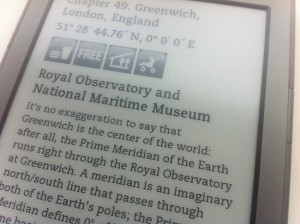Double Maths First Thing is Colin’s weekly newsletter. Usually several letters, arranged into words.
Hello! My name is Colin and I am a mathematician on a mission to spread joy and delight through the medium of mathematics. It’s Wednesday morning and it’s time for Double Maths First Thing.
Number City!
There’s only one place to start this week: on an Orcadian all-weather hockey pitch, where Katie Steckles is at it again. A crack team of maths communicators built towers of boxes representing the prime factors of the numbers up to 64. I love this sort of large-scale outreach project — low barrier to entry (anyone can doodle a number on a box), high curiosity factor (“what are all those nerds doing on the hockey pitch? Is that… Matt Parker? With SEVEN FROM NUMBERBLOCKS?!“), and plenty of depth available for those who seek it.
Meanwhile, Andrew Taylor created a game off of it, because when you’re Andrew Taylor, there are more important things than sleep. You’re given a picture of a small section of Number City and need to deduce where you are.
The only thing I don’t like is that it’s clearly not Number City — it’s a Factory Town.
A Number-Picking Puzzle
I secretly write down a number between 1 and 100 and you have to guess it. You pay me £1 every time you make a guess (I’ll tell you “higher”, “lower” or correct) and I’ll pay you £6 once you get the right answer.
How should you play if you know I’ve picked at random? How should you play if we’re both playing to win? Who wins in the long run?
The reason I ask is, Steve Ballmer (one-time CEO of Microsoft) used to ask this as a coding interview question; his answer was controversial.
There’s some analysis from John Graham-Cumming and from Possibly Wrong — I haven’t gone through it myself, because I’m still trying to figure out the answer when it’s a number from 1 to 3.
Classical maths
I’ve included the next three links as a challenge. Don’t get me wrong, I think they’re good, solid mathematical blog posts, made available for free, so I’m not going to complain — and yet I have a nagging feeling they could be done better. Could you explain these things more clearly?
Eli Bendersky has some notes on the Euler formula (I shall redact my rant about how the very idea of “the most beautiful equation” is offensive and wrong and replace it with one grumbling about Eli not properly LaTeXing up his functions).
John D Cook, meanwhile, has some advice on mentally approximating logs and trig functions.
And finally, Adrian Biagioli has an explanation of Perlin noise.
Not enough maths in your life?
I mean, who has? In case you’re one of today’s lucky 10,000 who don’t know about Chris Smith, he’s been running a school maths department newsletter for… well, I subscribed a decade ago and it’s gone from issue 293 to 690 in the meantime, so I imagine you can work it out. If you want to be part of the fun — a seemingly endless supply of jokes, puzzles and news, not to mention a milk rota that I’m too far in to ask about now — you can sign up by sending him an email.
In the meantime, if you have friends and/or colleagues who would enjoy Double Maths First Thing, do send them the link to sign up — they’ll be very welcome here.
That’s all for this week! If there’s something I should know about, you can find me on Mathstodon as @icecolbeveridge, or at my personal website.
Until next time,
C
